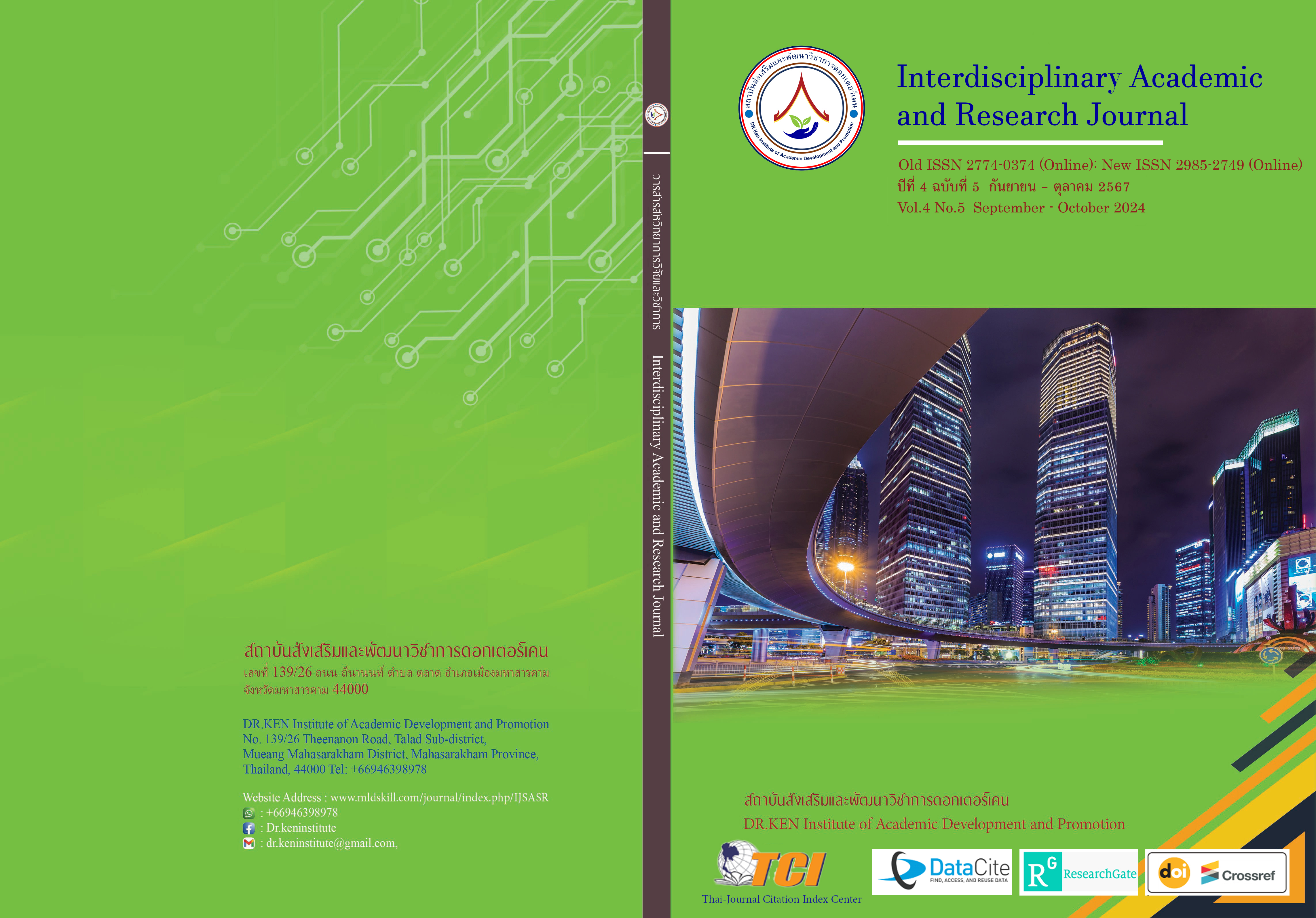Quality of Life and Work-Life Balance Among Veterinarians Working in Bangkok and Vicinity: A Comparative Study of Generation X and Generation Y
DOI:
https://doi.org/10.60027/iarj.2024.278074Keywords:
Attitudes; , Quality of Life; , Work-Life Balance; , Veterinarians;, Generation X; , Generation YAbstract
Background and Aims: Veterinary medicine is a popular profession in Thailand, and the concepts of quality of life and work-life balance are becoming increasingly prevalent. Understanding the factors that influence job satisfaction and happiness among veterinarians can benefit both individuals and organizations. This research aims to (1) study the quality of life and work-life balance of veterinarians in Bangkok and its vicinity: Generation X and Generation Y, and (2) compare the differences in quality of life and work-life balance between the two generations of veterinarians working in Bangkok and its vicinity.
Methodology: This research uses a qualitative method with semi-structured interviews and open-ended questions. Data were collected and analyzed using content analysis. The participants included 20 veterinarians: 5 from Generation X working in the public sector, 5 in the private sector, and 5 from Generation Y working in the public sector, and 5 in the private sector.
Result: The study found that Generation X veterinarians working in the private sector reported a higher quality of life and better work-life balance compared to their counterparts in the public sector. Factors contributing to this included age, work experience, compensation, social status, managerial positions, and business ownership, all of which enhanced their quality of life and work-life balance. On the other hand, Generation Y veterinarians in the public sector reported a higher quality of life compared to those in the private sector. This was attributed to clearer career progression and development opportunities in the public sector, which were more systematic than in the private sector. Although the number of working hours was greater, the resulting benefits positively impacted their career advancement. Despite higher compensation in the private sector, public sector veterinarians benefited from better healthcare benefits and retirement planning, which were more robustly supported than in the private sector.
Conclusion: The research findings show that Generation X and Generation Y veterinarians working in both the public and private sectors have different attitudes towards quality of life and work-life balance. They strongly agree on the importance of creating quality of life and work-life balance at work. However, differences were found in factors such as work environment, career advancement and development, compensation and benefits, and basic work-life balance. Therefore, the private sector should improve work policies, engage in discussions with employees to enhance quality of life and work-life balance, and improve benefits to increase satisfaction and organizational commitment. The public sector should improve compensation to motivate veterinarians to work for the organization.
References
นงลักษณ์ โพธิ์น้อย, พรเพ็ญ เผือกเอม, โชติมากานต์ ไชยเยศ, และปานวาด ปรียานนท์. (2565). คุณภาพชีวิตและสมดุลชีวิตในงานของผู้ประกอบวิชาชีพสัตวแพทย์: การศึกษาภาคตัดขวาง. วารสารมนุษยศาสตร์และสังคมศาสตร์ มหาวิทยาลัยนครพนม, 12(3), 62-76.
ปัทมาวรรณ จินดารักษ์, และสายสุนีย์ เกษม. (2562). สมดุลระหว่างชีวิตและการทำงานกับความหลากหลายของกลุ่มวัย. วารสารนักบริหาร, 39(1), 3-11
พรเพ็ญ เผือกเอม, และกาญจณา ประสงค์. (2564). ทัศนคติในการประกอบวิชาชีพของนักศึกษาคณะสัตวแพทยศาสตร์ มหาวิทยาลัยมหิดล. วารสารการพัฒนางานประจำสู่งานวิจัย, 8(1), 29-35
สถาบันบัณฑิตพัฒนบริหารศาสตร์, สำนักวิจัย. (2013). บทสังเคราะห์งานวิจัย คุณภาพชีวิตของคนไทย 2553-2555. กรุงเทพมหานคร: โรงพิมพ์แห่งจุฬาลงกรณ์มหาวิทยาลัย.
สัตวแพทย์สภา. (2565). บัญชีผู้ประกอบวิชาชีพการสัตวแพทย์ ที่ขึ้นทะเบียนใบอนุญาตเป็นผู้ประกอบวิชาชีพการสัตวแพทย์จากสัตวแพทยสภา. กรุงเทพฯ: สัตวแพทย์สภา.
Chua, Hazel Pei Cherz (2022). Analysing The Impact Of Covid 19 And Firm Performance: A Case Study Of Pet Foods Firms In Malaysia. UTAR.
Jopling, J. (2004). Understanding Generations, Extension. Retrieved 1 April 2024, from https://talentdepot.org/uploads/Understanding_Generations_West_Virginia.pdf
Walton, R.E. (1973). Quality of working life: what is it. Sloan Management Review, 15(1), 11-21.
Yaktavong, T., Supparerkchaisakul, N., & Priya Mohan, K. (2022). THE APPLICATION OF WORK-LIFE BALANCE FOR PRIVATE ORGANIZATION EMPLOYEES. Journal of Buddhist Anthropology, 7(8), 14–27. Retrieved from https://so04.tci-thaijo.org/index.php/JSBA/article/view/259892
Downloads
Published
How to Cite
Issue
Section
License
Copyright (c) 2024 Interdisciplinary Academic and Research Journal

This work is licensed under a Creative Commons Attribution-NonCommercial-NoDerivatives 4.0 International License.
Copyright on any article in the Interdisciplinary Academic and Research Journal is retained by the author(s) under the under the Creative Commons Attribution-NonCommercial-NoDerivatives 4.0 International License. Permission to use text, content, images, etc. of publication. Any user to read, download, copy, distribute, print, search, or link to the full texts of articles, crawl them for indexing, pass them as data to software, or use them for any other lawful purpose. But do not use it for commercial use or with the intent to benefit any business.
















.png)


